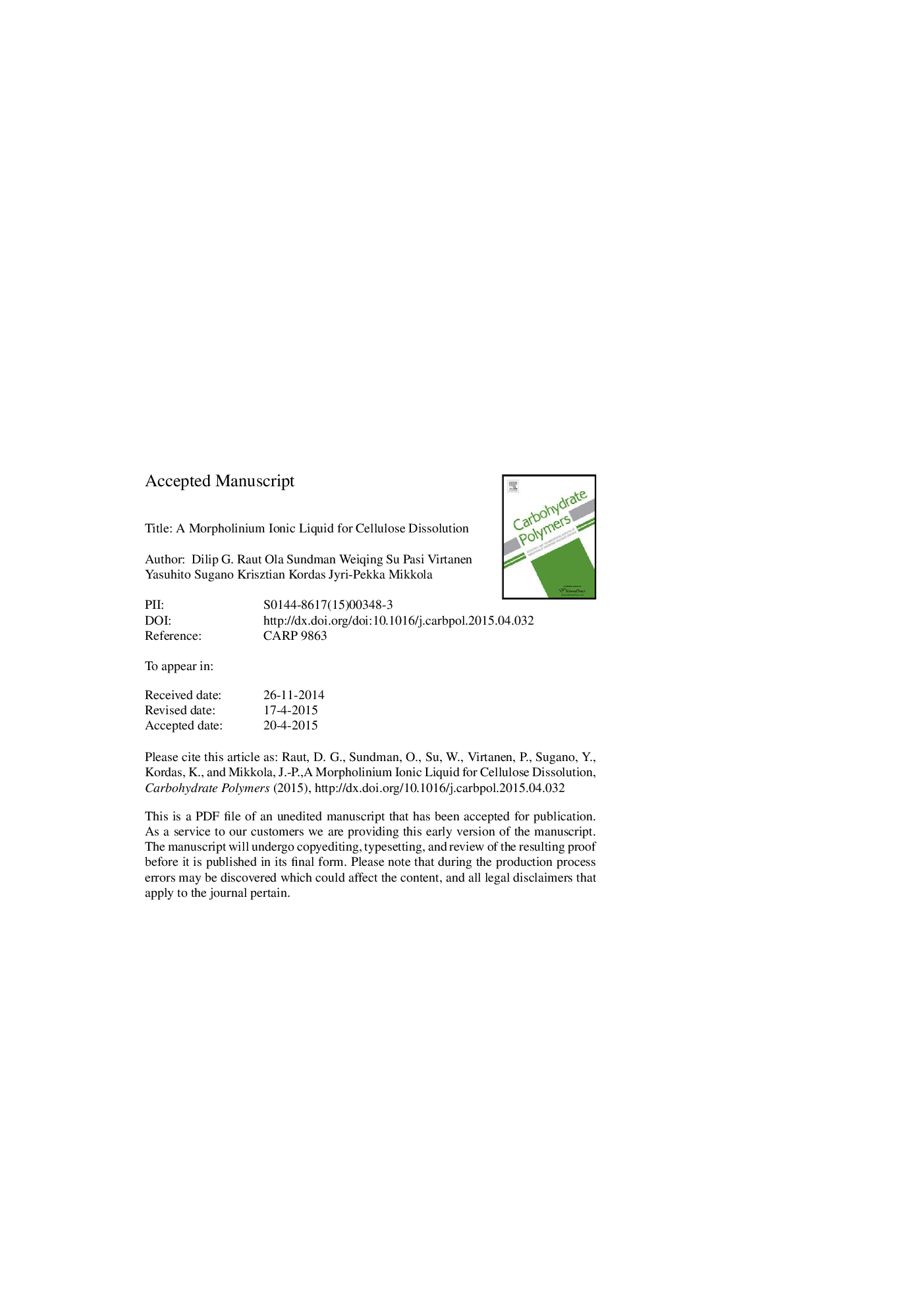| Article ID | Journal | Published Year | Pages | File Type |
|---|---|---|---|---|
| 7787931 | Carbohydrate Polymers | 2015 | 20 Pages |
Abstract
A series of substituted morpholinium ionic salts and allyl ammonium acetates were prepared. Amongst those, N-allyl-N-methylmorpholinium acetate ([AMMorp][OAc]) was found to dissolve cellulose readily without any pre-processing of native cellulose. At 120 °C, [AMMorp][OAc] could dissolve 30 wt%, 28 wt% and 25 wt% of cellulose with degree of polymerization (DPn) - 789, 1644 and 2082 respectively, in 20 min. Importantly, SEC analysis indicated that no discernible changes occurred in terms of the degree of polymerization of the different celluloses after regeneration. Furthermore, when comparing the cellulose dissolution capability of these newly synthesized ionic liquids, it is evident that the combination of all three constituents - the morpholinium cation, the existence of an allyl group and choosing the acetate anion are essential for efficient cellulose dissolution. The structure and morphology of the regenerated cellulosic materials were characterized by SEM, XRD, TGA, CP/MAS 13C NMR and FTIR, respectively.
Related Topics
Physical Sciences and Engineering
Chemistry
Organic Chemistry
Authors
Dilip G. Raut, Ola Sundman, Weiqing Su, Pasi Virtanen, Yasuhito Sugano, Krisztian Kordas, Jyri-Pekka Mikkola,
